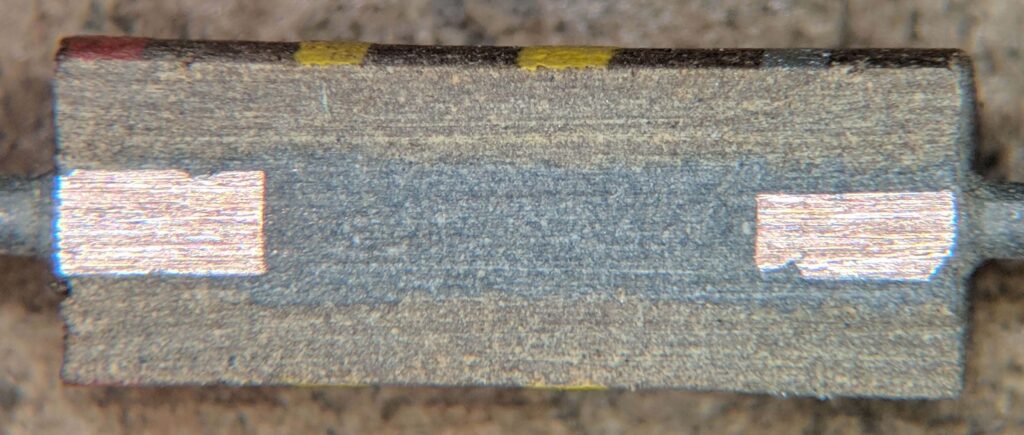A carbon composition resistor is a type of resistor where the resistive element is made from a composite material, typically a mixture of graphite and ceramic. These resistors were once widely used in various electronic devices, especially in the early 20th century. Despite being largely replaced by more stable alternatives like ceramic resistors, carbon composition resistors still have unique qualities that make them valuable in specific applications.
Structure and Materials
The key component of a carbon composition resistor is its resistive element, which is made from a mix of graphite (carbon) powder, ceramic powder (usually aluminum oxide), and a binding agent. These materials are pressed into a cylindrical shape and then heated in a process called sintering. During sintering, the graphite particles form a conductive network within the non-conductive ceramic matrix, giving the resistor its ability to conduct electricity. However, this structure also leads to some instability, especially over time and under varying temperatures.

Housing and Termination
In the early versions of these resistors, the resistive core was left exposed, and connection wires were simply wrapped around the ends. Over time, manufacturers started embedding the connection wires into the body of the resistor and adding ceramic or plastic casing to protect the core from environmental factors like moisture and dirt. The added protection also improved the resistor’s durability, although it did not solve all the issues related to its inherent instability.

Key Properties
Resistance Values
Carbon composition resistors are available in a wide range of values, from a few ohms to several megaohms. They are typically sorted into standard series like E6, E12, and E24.
Tolerances
The manufacturing process of carbon composition resistors results in relatively high tolerances, ranging from 5% to 20%. This means that the actual resistance value may deviate significantly from the stated value, especially when subjected to factors like temperature changes and aging.
Stability
These resistors are known for their poor long-term stability. Over time, and especially under high temperatures or stress, the resistance can increase by as much as 5% per year. This makes them less reliable for precision applications.
Noise
Carbon composition resistors tend to generate more noise compared to other resistor types, due to their inhomogeneous structure. This noise can be problematic in audio or measurement circuits where signal integrity is crucial.
Non-linearity
When subjected to high voltages, carbon composition resistors can exhibit non-linear behavior, where the resistance changes as the voltage increases. This effect is generally undesirable, as it can distort the signal in sensitive electronic circuits.
Pulse Handling
One of the key strengths of carbon composition resistors is their ability to withstand high-energy pulses without damage. This makes them ideal for applications where short bursts of high voltage or current are expected, such as in surge protection or high-voltage pulse generators.
Applications
Despite being largely phased out in favor of more stable resistor types, carbon composition resistors are still used in applications where their high pulse-handling capability and low inductance are advantageous. These include high-voltage power supplies, RF circuits, and some types of transient voltage suppression circuits.
Conclusion
While carbon composition resistors may no longer be the go-to choice for most applications, their unique properties—such as high pulse tolerance and low inductance—ensure that they remain relevant in niche areas of electronics. However, their poor stability, high noise levels, and non-linearity make them less suitable for modern precision electronics.
learn more
For more details check this old US3676925A patent from 1970’s with title “Method for making molded carbon composition resistors”


Leave a Reply